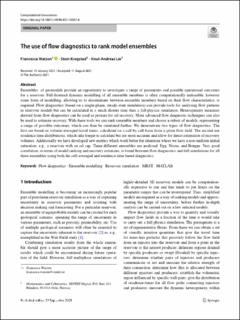| dc.description.abstract | Ensembles of geomodels provide an opportunity to investigate a range of parameters and possible operational outcomes for a reservoir. Full-featured dynamic modelling of all ensemble members is often computationally unfeasible, however some form of modelling, allowing us to discriminate between ensemble members based on their flow characteristics, is required. Flow diagnostics (based on a single-phase, steady-state simulation) can provide tools for analysing flow patterns in reservoir models but can be calculated in a much shorter time than a full-physics simulation. Heterogeneity measures derived from flow diagnostics can be used as proxies for oil recovery. More advanced flow diagnostic techniques can also be used to estimate recovery. With these tools we can rank ensemble members and choose a subset of models, representing a range of possible outcomes, which can then be simulated further. We demonstrate two types of flow diagnostics. The first are based on volume-averaged travel times, calculated on a cell by cell basis from a given flow field. The second use residence time distributions, which take longer to calculate but are more accurate and allow for direct estimation of recovery volumes. Additionally we have developed new metrics which work better for situations where we have a non-uniform initial saturation, e.g., a reservoir with an oil cap. Three different ensembles are analysed: Egg, Norne, and Brugge. Very good correlation, in terms of model ranking and recovery estimates, is found between flow diagnostics and full simulations for all three ensembles using both the cell-averaged and residence time based diagnostics. | en_US |

